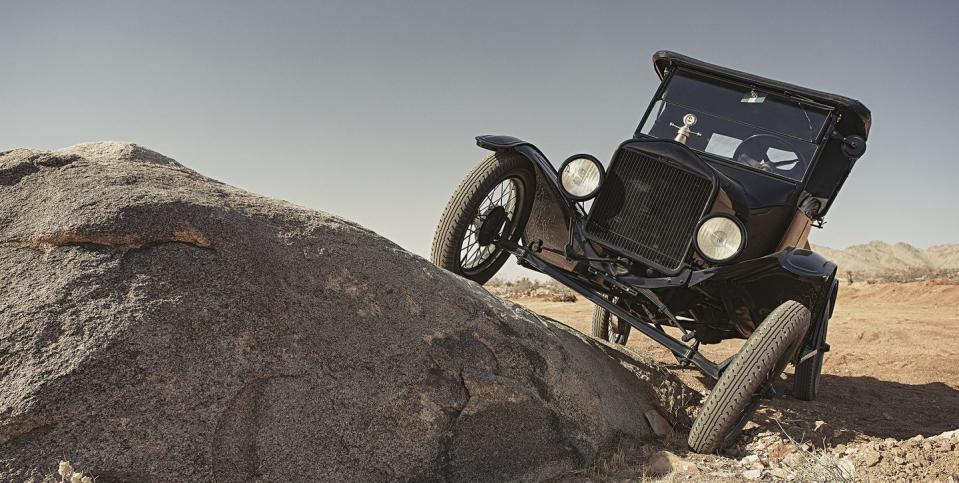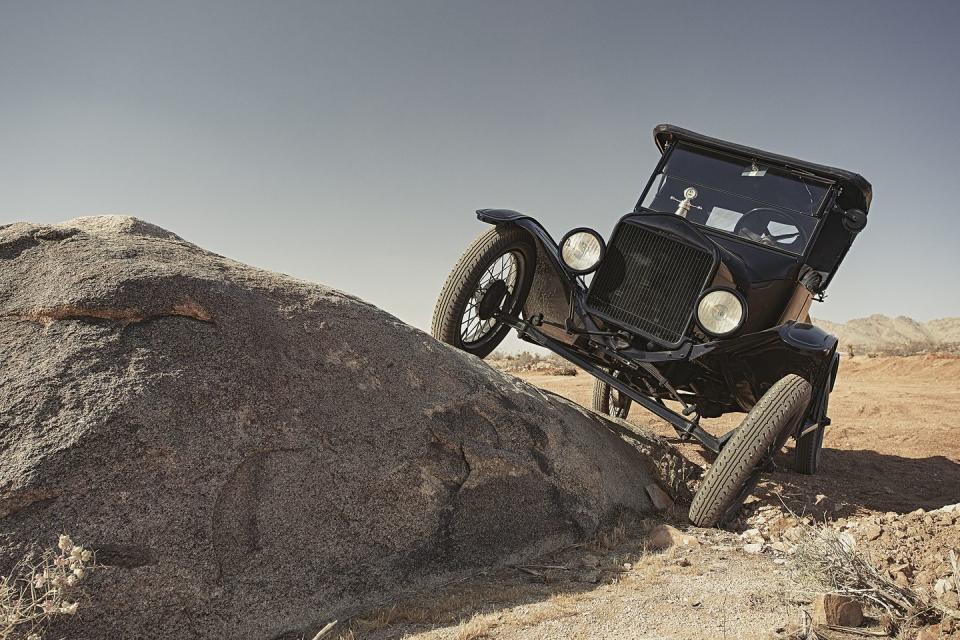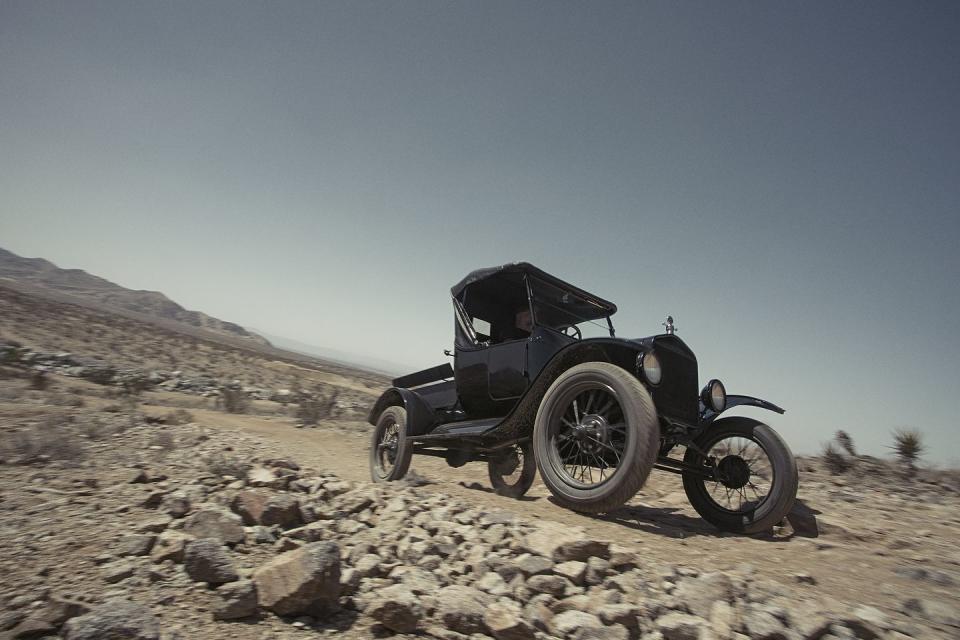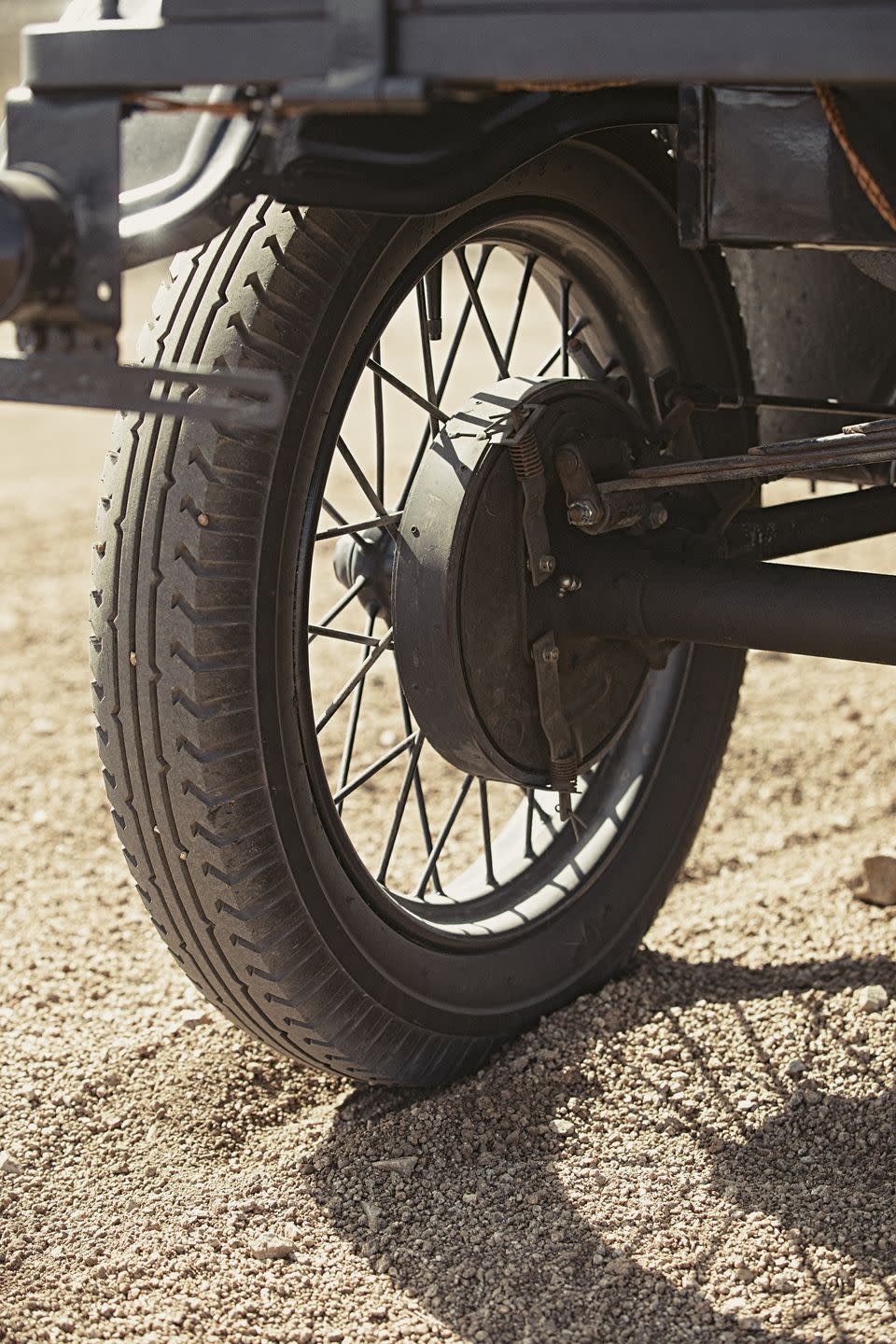No Modern Car Can Match the Model T's Modding Community


Modifying cars is codified into the history of America. The minute two cars pulled up next to each other at a dusty intersection in the Midwest, one of those coachmen decided his horseless carriage needed to be superior.
This story originally appeared in Volume 12 of Road & Track.
SIGN UP FOR THE TRACK CLUB BY R&T FOR MORE EXCLUSIVE STORIES
Customizing is about expression and value. It’s about incremental spending and fine-tuning. It’s a David-and-Goliath story, like making your three-year-old Corvette accelerate as quickly as a $4 million Bugatti.
And it’s not just decades—at this point, we’re talking a century of modifying. There’s a solid chance your great-grandfather was an early home-tuner. A hundred years ago, while the Gilded Age barons donned their leather helmets and raced their Mercers, Simplexes, and Bugattis, 15 million average folks were getting the itch for speed behind the wheel of a Ford Model T.

A Model T cost as little as $260, or about $7850 in today’s money—90 percent less than a European sports car. To experience a Model T is to first learn where that money didn’t go. Most Model Ts are famously all black, saving on paint cost. Later models had no fancy brass work. There are no real brakes, no fuel pump, and only two forward gears. The Model T was revolutionary, yes. But from the factory it was also too basic for many owners. Ford’s assembly-line construction changed the automotive industry forever, and the sheer ubiquity of the Model T meant millions of owners would take fixing its shortcomings into their own hands.
The Model T birthed the automotive aftermarket. You could get anything for these cars. There were mechanical improvements, cosmetic tweaks, durability upgrades, and more. Extensive catalogs, many of which still exist, showed you could customize your T to any specific need, style, or condition you might encounter. And people did.
John Bothwell has five Model Ts in his personal collection, along with a variety of other early cars, from Locomobiles to Rolls-Royces. Professionally, Bothwell is the director of Pur Sang Argentina, a company building period-correct replicas of pre-war grand prix cars using, wherever possible, the exact methods and blueprints from the originals. In fact, if you own a real 1924 Bugatti Type 35 and need spare parts, Volkswagen’s Bugatti can’t help you. Pur Sang is who you call.

Bothwell became passionate about the Model T after inheriting one from his grandfather and, with shockingly little preparation, joining my friends and me on a 1200-mile off-road drive across Utah.
Grandpa’s Model T proved adept on the dirt,billy-goating up trails that would challenge all but the most dedicated off-roaders. The skinny tires, extraordinary ground clearance, low gear-ing, and atmospheric-pressure cooling system are particularly suited to the task. Its biggest limitations popped up on the short paved sections, where it had a top speed of just 45 mph. It also had a period-modified overhead-valve head that required constant fiddling. Bothwell made notes and plans and acquired more Model Ts.
Four years later, we’ve met up at Apple ValleySpeedway, a dustbowl of a road course out in the California high desert, for a little experiment: What’s it like to drive two extreme ends of the Model T tuning spectrum?

Bothwell has brought a pair of cars for us today, both in impeccable condition: The “Speedster,” as its name implies, is a race car, and the “Super T” was built from his notes made during our off-road trip, with every conceivable period-correct off-road modification. It’s the 108-year-old equivalent of a modern PreRunner.
When they’re parked next to each other, you cannot believe these two vehicles started out the same. Aesthetically, the off-roader is what you picture a Model T to look like in your head, with the carriage-like soft top, folding glass windshield, and high-riding bench seat. The Speedster looks nothing at all like a Model T; it looks like an early Indy car, with no bodywork, no grab handles, no nothing. Just an engine, a few rails, and two seats. The engine is moved back eight inches, revealing the original mounting holes in the frame rails, now far in front of the radiator.

To say a Model T is not like a modern car would be a drastic understatement. Controls weren’t standardized at the time, something you take for granted once you try to drive one. The last time I tried was in Southern California traffic, which was terrifying. Here, we’re alone in the desert, like we might have been back then. Out here, there is no danger of being run over by a latte-sipping Tesla driver on a conference call.
I crawl awkwardly into the Super T from the passenger’s side, over the aftermarket gear levers that now dominate the cabin, and settle in. Size-12New Balances were the wrong choice.

 Yahoo Autos
Yahoo Autos 